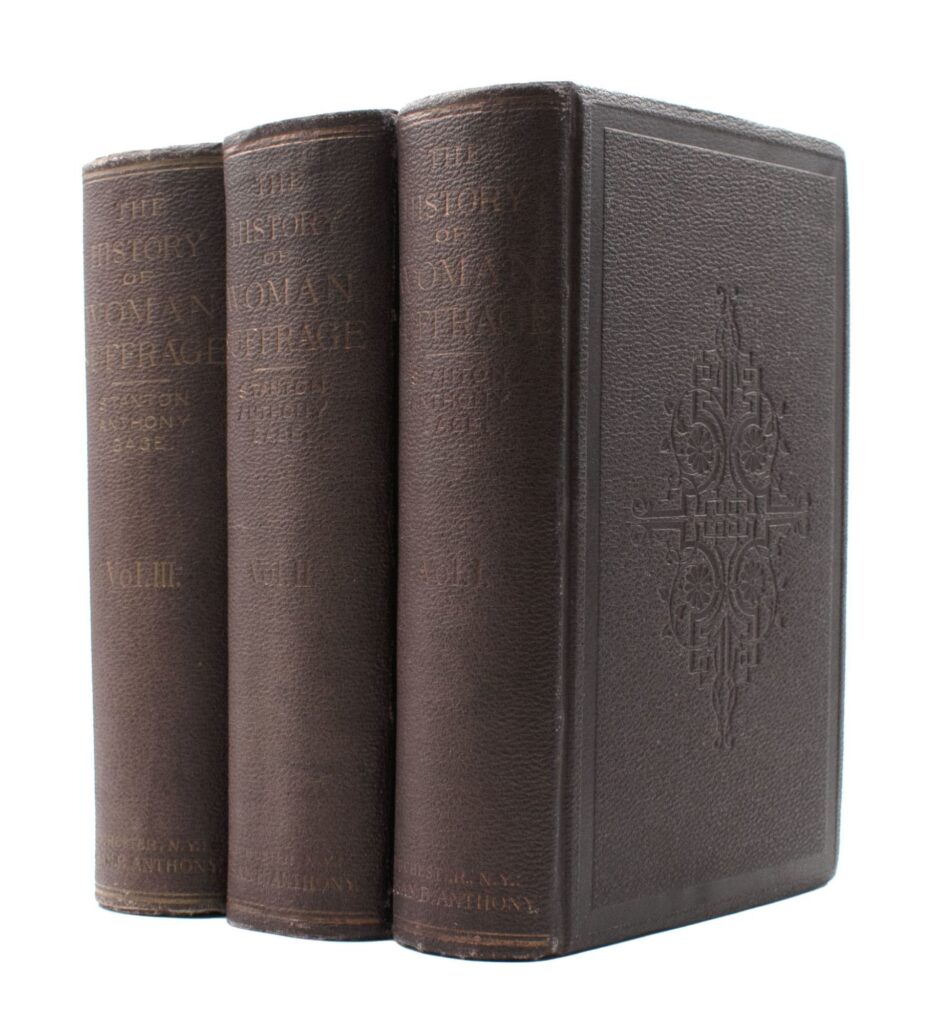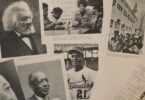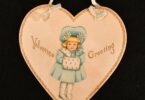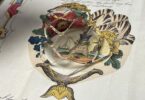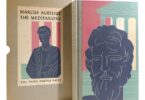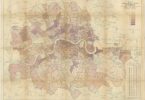In 1987, the National Women’s History Project successfully lobbied the U.S. Congress to designate all of March as National Women’s History Month. Since then, it has become an annual observance officially in the United States, the United Kingdom, Australia, and unofficially worldwide.
The month coincides with International Women’s Day on March 8th, a global celebration honoring women’s social, economic, cultural, and political achievements and their historical significance to society. It serves as a call to action for gender equality and women’s empowerment worldwide. It is a time to recognize women and the progress made toward the equality of sexes and acknowledge the ongoing challenges.
History of Women’s Rights and Suffragism
The Women’s Rights movement began in the 19th century, challenging gender-based inequality and advocating for fundamental rights in education, employment, health, and society. While women were subject to the laws of society, they had very little in the way of civil rights – such as the right to own property, get a divorce, or even claim money they earned. To change these laws, women had to have a voice – thus began the Suffrage movement – nothing to do with suffering but instead derives from the Latin word “suffragium,” the right or privilege to vote in political elections.
New Zealand was the first country that allowed women to vote in national elections when they passed the 1893 Electoral Act. This decision set a precedent for other suffrage movements around the world. In 1895, South Australia granted women the right to vote, and other Australian states followed, so by 1908, all women in Australia could vote in federal elections.
In 1918, Canada also signed into law that women have federal voting rights.
Both the U.S. and the U.K. had notable Suffragette movements. Suffragism was closely tied to abolitionist and temperance movements in the United States. In the U.K., it was a women-led movement that grew increasingly militant.
History of Suffrage in the US
In 1848, the first American women’s rights convention was held in Seneca Falls, New York. Before the Civil War, the suffrage and abolitionist movements were closely tied, and many figures such as Sojourner Truth, Harriett Tubman, Frederick Douglass, William Lloyd Garrison, Elizabeth Cady Stanton, and Susan B. Anthony worked together toward both ending slavery and equal voting rights.
Disagreements over the importance of the 15th Amendment, which granted African American men the right to vote, led to two separate organizations fighting for women’s rights. The American Woman’s Suffrage Association (AWSA), established in 1869, supported the 15th Amendment and was the more moderate and popular group. The National Woman Suffrage Association (NWSA), also established in 1869 by famous women’s rights leaders Elizabeth Cady Stanton and Susan B. Anthony, did not support the 15th Amendment – they wanted women to be included in the Amendment as well. The NWSA was more radical and controversial and focused on more women’s issues than just the vote.
On February 26, 1869, Congress passed the 15th Amendment. It was ratified on February 3, 1870, with the intention to ensure that “The right of citizens of the United States to vote shall not be denied or abridged by the United States or by any State on account of race, color, or previous condition of servitude.”
The suffrage movement in the United States was also closely tied to the Temperance movement that led to the 18th Amendment, which prohibited the manufacture, sale, or transportation of intoxicating liquors. The Women’s Christian Temperance Union was the largest and most influential women’s group of the 19th century. They were on board with the suffragist movement, believing that more women voters would help to vote for the prohibition of alcohol.
In the U.S., the 19th Amendment, stating that the right of citizens of the United States to vote shall not be denied or abridged by the United States or by any State on account of sex, was introduced to Congress in 1878 but not ratified until 1920. This Amendment finally gave white women the right to vote, but Women of Color continued to face legal discrimination until The Voting Rights Act of 1965.
Famous U.S. Suffragettes
Elizabeth Cady Stanton (November 12, 1815 – October 26, 1902) was a writer and activist who led the women’s rights movement of the 19th century. Stanton helped organize the Seneca Falls Convention, the first Women’s Rights convention, in 1848. Along with Susan B. Anthony and Matilda J. Gage, Stanton published a six-volume History of Women’s Suffrage between 1881 and 1922. The voluminous work (5700 pages) is a detailed account of Women’s Suffrage in the United States. Stanton’s daughter, Harriot Stanton Blatch, was also a suffragette.
Susan B Anthony (February 15, 1820 – March 13, 1906) was a leader in not only the women’s rights movement but also temperance, abolition, the rights of labor, and equal pay for equal work. She worked closely with Elizabeth Cady Stanton for decades.
Catherine Beecher (September 6, 1800 – May 12, 1878 ) was a teacher and writer who promoted equal access to education for women. From a prominent, educated, and religious family, her sister was writer Harriet Beecher Stowe (Uncle Tom’s Cabin), and her brother was abolitionist and clergyman Henry Ward Beecher.
Angelina Emily Grimké Weld (February 20, 1805 – October 26, 1879) was born into a wealthy slave-owning family in Charleston, South Carolina. In adulthood, she moved North and became an abolitionist, activist, and supporter of the Women’s Rights and Suffrage movement.
Alice Paul (January 11, 1885 – July 9, 1977) wanted to bring the energy of the women’s movement in Britain to the U.S. In 1913, she organized a March in Washington, D.C. that attracted thousands. In 1916, along with Lucy Burns, Paul formed the National Woman’s Party to lobby Congress. Her group took up a daily protest against Woodrow Wilson, and dozens of women were imprisoned, beaten, and force-fed through hunger strikes. After getting the right to vote for women, Paul promoted the Equal Rights Amendment, a constitutional amendment that will guarantee legal gender equality for women and men.
Doris Stevens (October 26, 1888 – March 22, 1963) was an American suffragist, women’s legal rights advocate and author. Stevens served on the executive committee of the National Woman’s Party, and in 1920, Boni and Liveright published her book Jailed for Freedom, her first-hand account of the movement.
Juliet Barrett Rublee (March 2, 1875 – May 17, 1966) was an American birth control advocate, Suffragist, and film producer.
History of Suffrage in the UK
By the early 20th century, the British suffragettes had decided that ‘Deeds not Words’ was their motto. In 1903, the Women’s Social and Political Union (WSPU) was founded. The women-only political movement became the leading militant organization campaigning for women’s suffrage. Organizer Emmeline Pankhurst later spoke in the United States, comparing their militant action for Suffragism to that of the American forefather’s Boston Tea Party to protest the taxation of Britain: if women could not vote and had no means of speaking up for themselves, what other way could they be heard?
On November 18, 1910, the WSPU led a 300-woman march to Parliament to secure voting rights for women. The women were met by police and male bystanders who attacked the women for six hours, beating and sexually assaulting them. The day became known as Black Friday. Then, on March 1, 1912, approximately 150 women armed with hammers descended upon London’s West End. The window-smashing campaign aimed to pressure the Government to allow women to vote. Emmeline Pankhurst stated, ‘The argument of the broken pane of glass is the most valuable argument in modern politics.’
Imprisoned for their rebellion, the women in England led hunger strikes in prison, making the Government choose to kill them or give them the vote. To counteract their hunger strikes, Parliament instituted the 1913 Prisoners (Temporary Discharge for Ill-Health) Act, known as the “Cat and Mouse Act,” allowing the temporary discharge of prisoners who were near death because of hunger strikes. Once their health was recovered they would return to prison.
The brave actions of the British suffragettes finally led to the 1918 Representation of the People Act, which first gave British women the right to vote.
Famous UK Suffragettes
Emmeline Pankhurst (July 15, 1858 – June 14, 1928) was a political activist who led the women’s suffrage movement in the U.K. Her daughter, Dame Christabel Harriette Pankhurst DBE (September 22, 1880- February 13, 1958), was also prominent in the woman suffrage movement, and a co-founder of the Women’s Social and Political Union.
Mary Richardson (1882/3 – November 7, 1961) was born in Canada but later moved to England and joined the Suffragette movement, witnessing Black Friday in 1910. She became increasingly militant in her actions and was arrested nine times for acts, including smashing windows and arson. Her most notable protest happened on March 10, 1914, when she entered the National Gallery in London and attacked the Rokeby Venus, a famous painting by Diego Velázquez, slashing it multiple times. She was sentenced to six months in prison. Of the incident, she stated: “I have tried to destroy the picture of the most beautiful woman in mythological history as a protest against the Government destroying Mrs. Pankhurst, who is the most beautiful character in modern history. Justice is an element of beauty as much as colour and outline on canvas.”
Emmeline Parkhurst had been beated and arrested the day before for addressing a large meeting of the Women’s Social and Political Union at St. Andrew’s Hall in Glasgow, which was stormed by the police. Mary Richardson was also a writer, publishing one novel, Matilda and Marcus (1915), and three volumes of poetry, Symbol Songs (1916), Wilderness Love Songs (1917), and Cornish Headlands (1920) and Laugh a Defiance (1953), a “suffragette autobiography.”
Emily Davidson (October 11, 1872 – June 8, 1913) was a leader in the British suffragette movement and a member of the Women’s Social and Political Union. Her militant actions to gain the women’s vote included hiding in the air ducts to listen to Parliament and hurling rocks and metal balls labeled ‘bombs’ through windows. She was arrested nine times and went on hunger strike seven times, authorities force-feeding her on forty-nine occasions. She died at 40 after walking into the race track in front of the King’s horse at the Epsom Derby in 1913.
Millicent Garrett Fawcette (June 11, 1847 – August 5, 1929) was the National Union of Women’s Suffrage Societies leader from 1897-1919.
Gertrude Baillie-Weaver (June 8, 1855 – November 26, 1926) was an English Suffragette and writer who published under the pseudonym Gertrude Colmore. Her sensational novel, A Daughter of Music, was published in 1894 and centers around the ambitious Hilda, who pursues a life of music against her father’s wishes. Baillie also published Suffragette Sally (1911) and The Life of Emily Davison (1913).
Charlotte Despard (June 15, 1844 – November 10, 1939) was an Anglo-Irish suffragist, socialist, pacifist, Sinn Féin activist, and novelist. The Suffrage Shop opened in 1910 by actress Sime Seruya, published her book Women in the New Era the same year. The shop also acted as a publisher for Cicely Hamilton’s Pageant of Great Women, one of the most frequently performed Suffragist plays, and Margaret Nevinson’s In the Workhouse.
Dame Ethel Mary Smyth (April 22, 1858- May 8, 1944) was a British Composer, Writer and Suffragist. The Anthem “The March of Women,” a battle song for England’s women’s movement, was composed by Dame Ethel Smyth in 1911.
Christina Broom (December 28, 1862 – June 5, 1939) took some of the best photographs of the brave women who campaigned for the vote in London up to the outbreak of the First World War in 1914.
Katharine “Kate” Parry Frye (January 9, 1878 – February 16, 1959) was a British actress, a lifelong diarist, and a Suffragist.
Other Notable Works and Ephemera
In 1913, American writer Floyd Dell published Women as World Builders: Studies in Modern Feminism, highlighting notable suffragists such as Emmeline Parkhurst, Jane Addams, and Dora Marsden.
The Autograph Album and Diaries of Suffragette and Women’s Rights Advocate Georgiana Barrows, 1848-1912:
The Suffrage Cook Book (1915). A fantastic copy of a scarce cookbook that was utilized as a fundraising tool for Pennsylvanian suffragettes:
Resources:
“Women’s History and Women’s History Month.” Live Your Dream.org
“The International Suffrage Shop” Woman and Her Sphere
“Great speeches of the 20th century: Emmeline Pankhurst’s Freedom or Death.” The Guardian
Amy C. Manikowski is a writer living in Asheville, NC.



